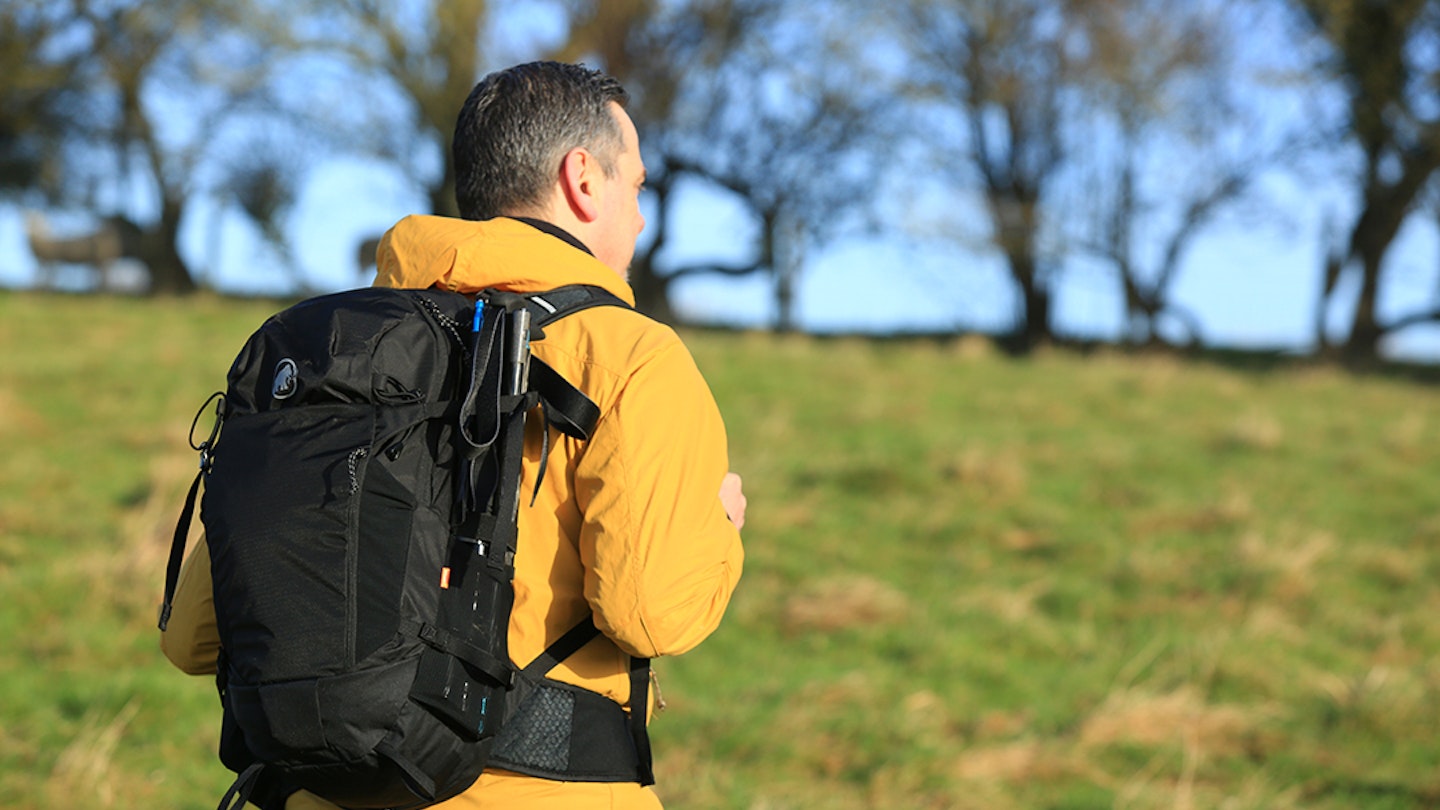Mammut’s Lithium hiking backpacks are packed with impressive features and targeted at go-anywhere hikers rather than just elite mountaineers. So can this 25L day-pack compete with the likes of all-conquering Osprey and Gregory models that dominate the market?
It can certainly try. From air-channelled back system to huggy hip-fins, the Lithium 25 is a sophisticated daypack which is surprisingly big on storage. Put it beside Osprey’s Talon 26 or 22 and you might struggle to tell the difference. Better still, it performs like them too. And here’s the rub: at £110, its asking price is £35 cheaper.
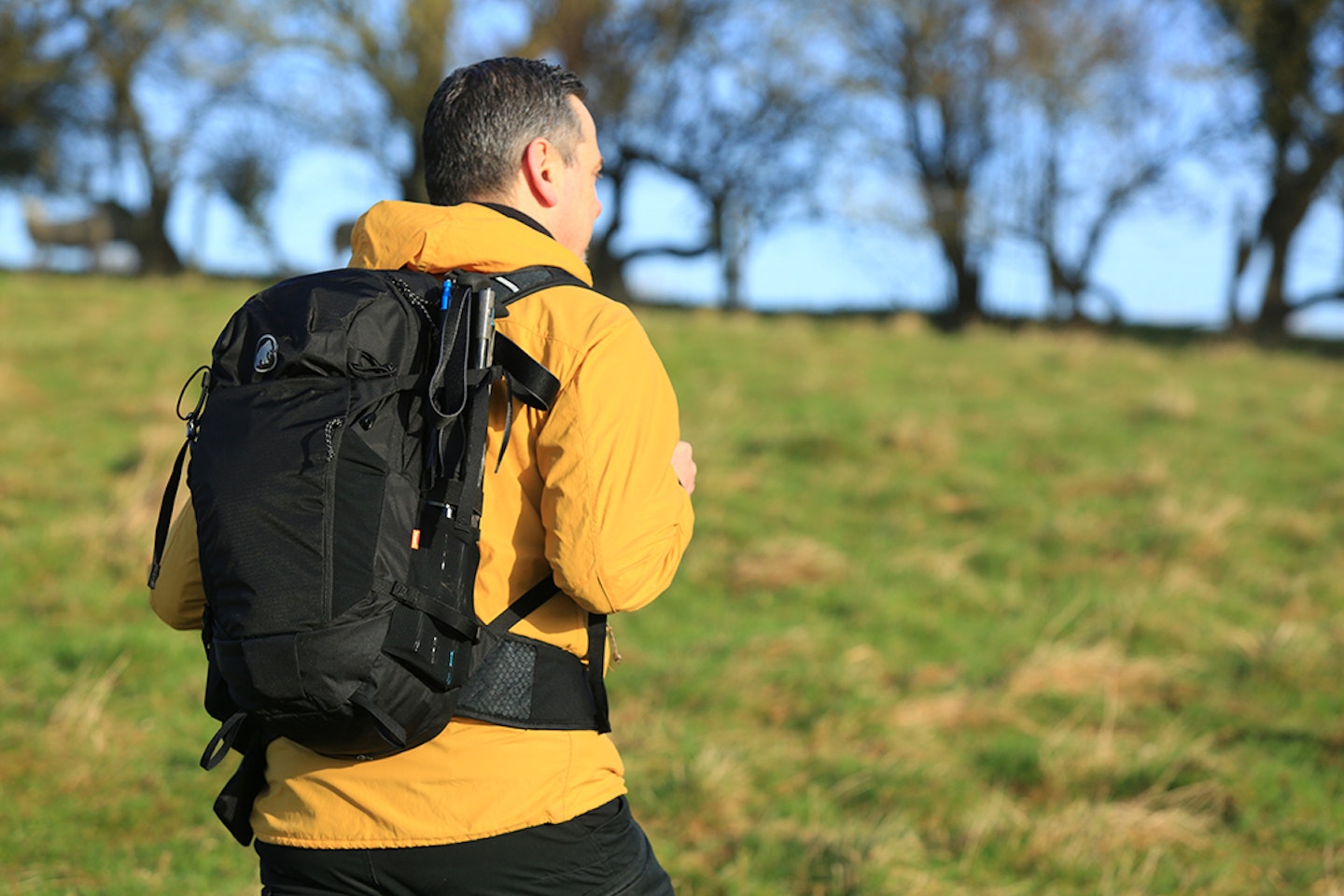
www.alpinetrek.co.uk
Pros
- Great price
- Huge range of features
- Great storage for its size
- Sustainable design
Cons
- Over-spec’d if you like minimalism
- Fussy strapping
- Front flap straps obstruct the main zip
| Weight | 851g |
| Volumes | Waistpack, 15L, 20L, 25L, 30L, 40L |
| Materials | Majority recycled and bluesign-approved nylon w/ PFC-free DWR |
| Best for | Hillwalking, mountain hikes |
Overview
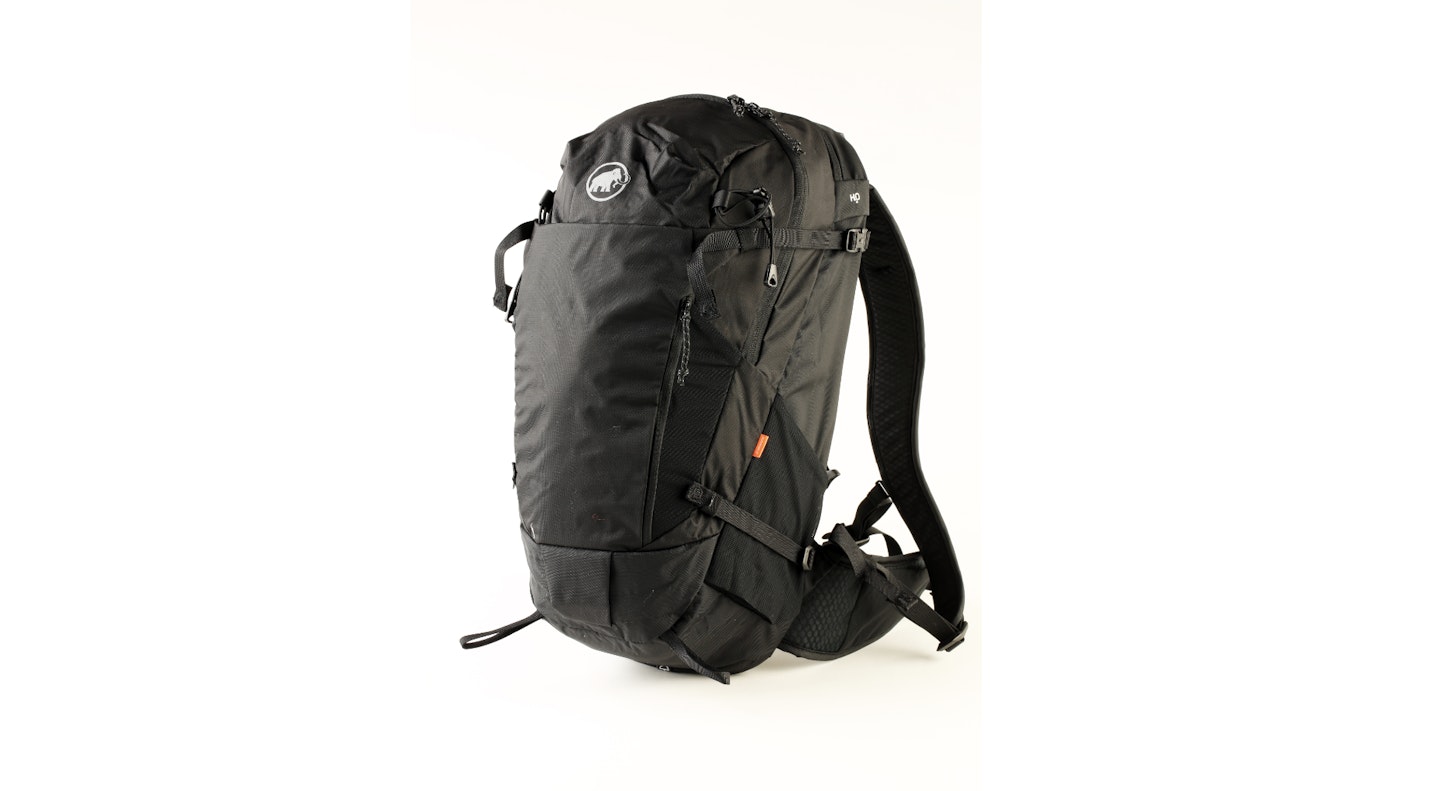
Mammut’s Lithium rucksack range is impressive. It comes in capacities of 15L, 20L, 25L, 30L and 40L, and each version has a dedicated women’s variant, where the carry system is adapted for the female anatomy. There is also a waistpack version; like the main range it’s aimed at walkers rather than runners, as it boasts soft padding and more capacity than the average running pack needs.
These aren’t minimalist packs by any means. If you like your rucksacks stripped-back and fuss-free, you’re likely to consider the Lithium range over-spec’d, even faffy. But if you like sophistication and even luxury in your backpack, you’ll be very happy.
In this review we tested the mid-range 25L pack, which is an ideal size for most day hikes. Its features will particularly suit hillwalkers: a well-ventilated back system, a supportive hip-belt with loads of quick-access storage, walking pole loops, a raincover, a huge front flap that can store a warm or waterproof layer, and a sturdy but breathable shoulder harness.
And like the other packs in the range, the Lithium 25 has impressive sustainability credentials. It’s made with 89% recycled materials and its water-repellent treatment is free of perfluorocarbons. It also carries the Bluesign label, meaning it has been manufactured to strict safety and environmental requirements.
Back system: panel, frame, and harness
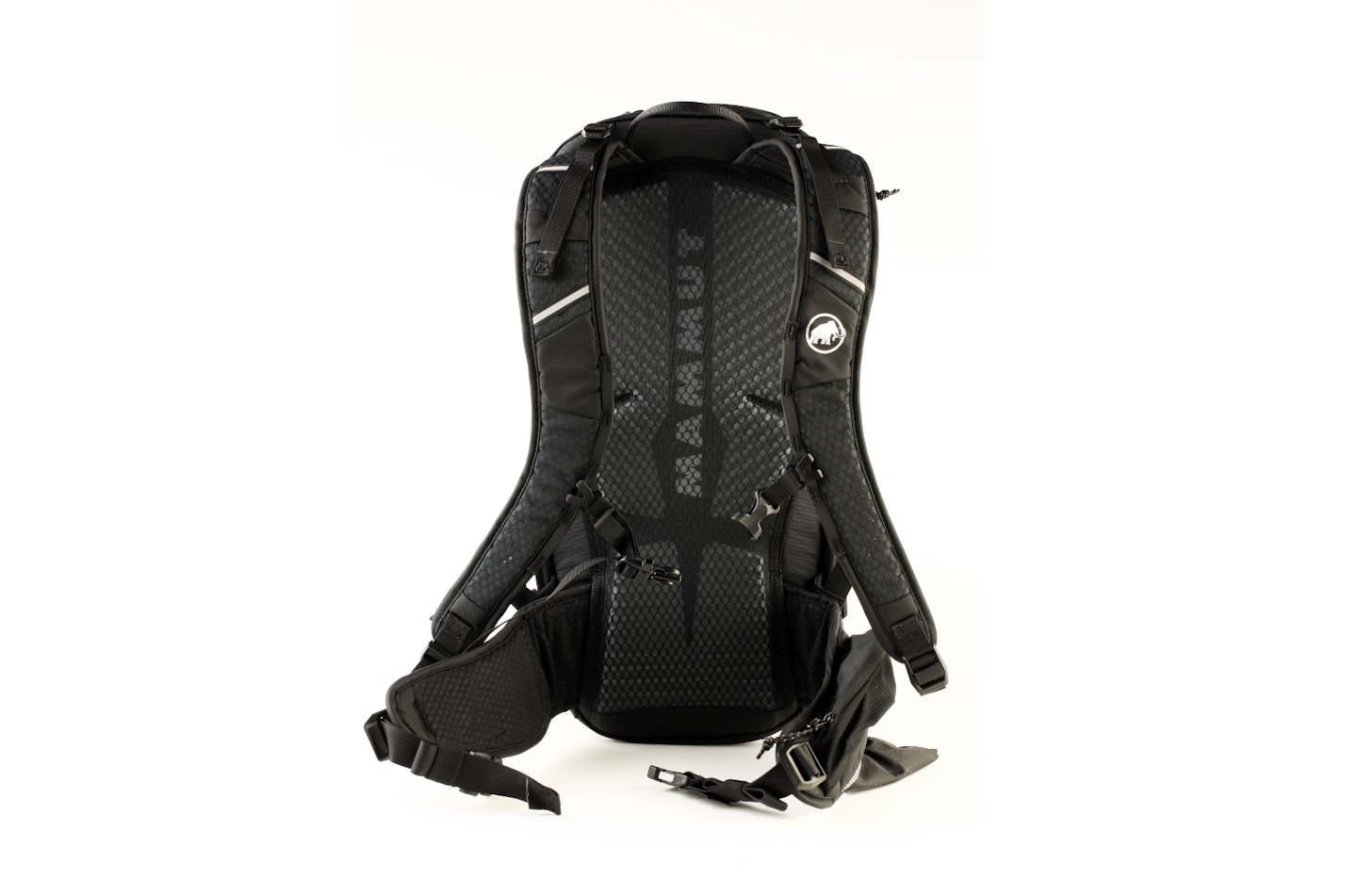
The back system of the Lithium 25 consists of an ergonomically-shaped EVA foam panel with ventilation channels, overlaid by a soft, breathable mesh that sits against your back. While not as pleasantly breathable as a suspended back system (especially on hot days) it nonetheless does an excellent job of conveying excess heat away from your back. And because it isn’t suspended, the load is held close and stable with no effect on your centre of gravity, making it ideal if you like a bit of scrambling.
The S-shaped shoulder straps are lightly padded and comfy even after many miles, and they are reasonably adjustable too.
The hip-belt has long arms which encircle the hips and bear the weight of the pack effectively, with subtle padding which prevents abrasion without adding weight or heat. The hip-belt can be removed via a Velcro pad concealed in the back system. But if you’ve bought a pack with this level of spec and sophistication, it’s hard to see why you might want to get rid of something so useful and well-designed as this hip-belt.
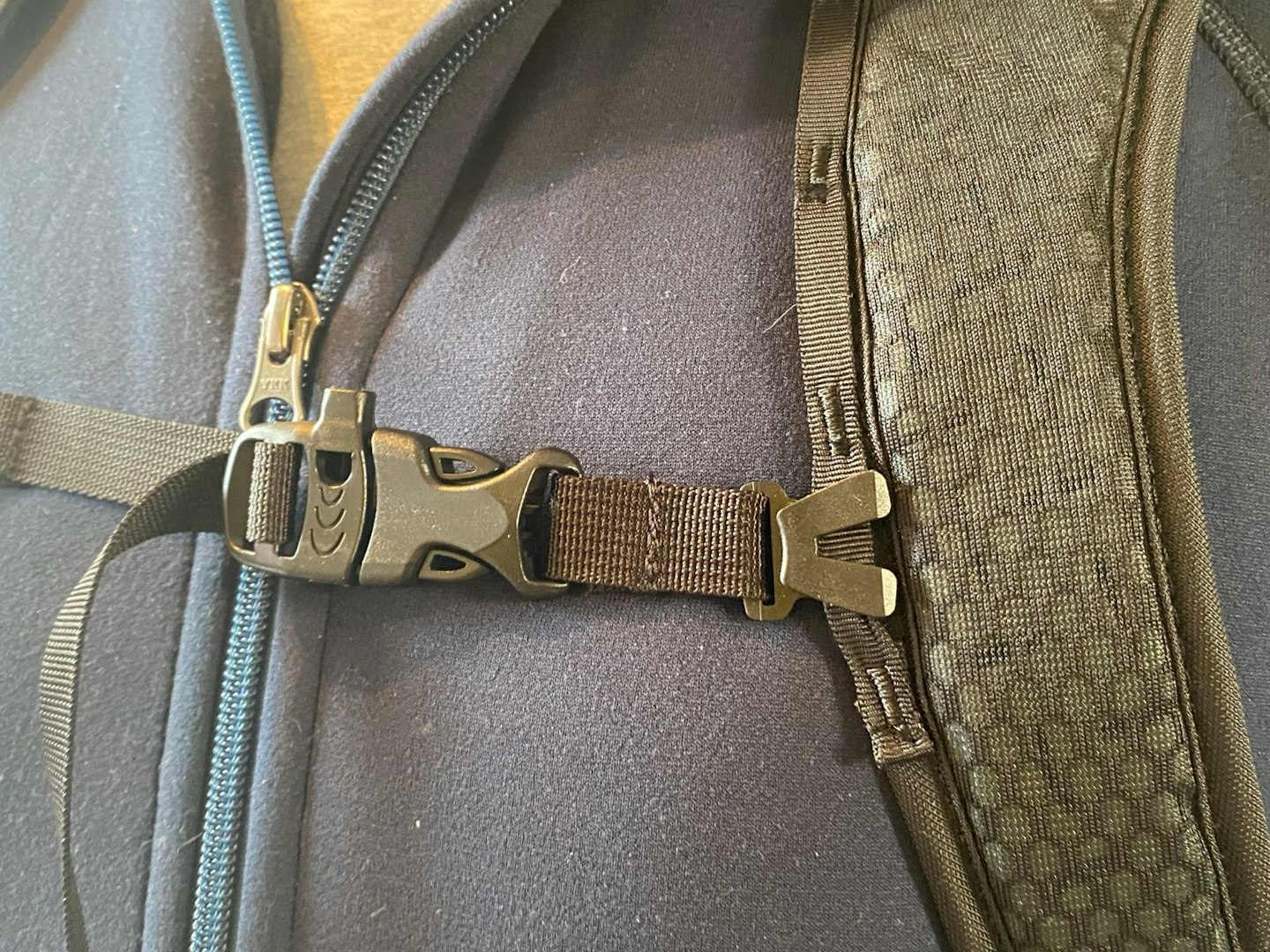
The chest strap sits on a daisy chain, which makes it nice and secure but also very fiddly to adjust, especially if you’re wearing gloves or just have cold hands. In fact it’s one of the hardest such straps we’ve ever had to clip and unclip, because the clamp bites onto the daisy chain like a piranha.
So if you like to set the chest strap at one height and leave it there, great. It will sit there securely in place until the end of time, probably. But if you like to adjust the chest strap frequently (e.g. to cope with added or reduced bulk when you throw warm or waterproof layers on and off, or if you share the pack with a partner or pal with different measurements), then you’ll miss the simple slider provided on most packs by Lowe Alpine, Gregory and Osprey.
Back length and sizing

The height of the back system is not adjustable, so it’s important to make sure it’s a good fit before you buy. The unisex version has a back length of 46cm. Our tester is 5ft 9” and fited him nicely, with a little adjustment. The women’s version has a slighter shorter back length at 43.5cm.
This is one area where the comparable Osprey Talon/Tempest and Gregory Miko/Mira packs are superior, as they include adjustable back systems.
It would be nice to see Mammut joining some other key brands (Alpkit, Osprey and Gregory in particular) in offering XXL and plus-size pack variants at some point. The Lithium range would certainly be ideal for that kind of upgrade.
Volume, shape and weight
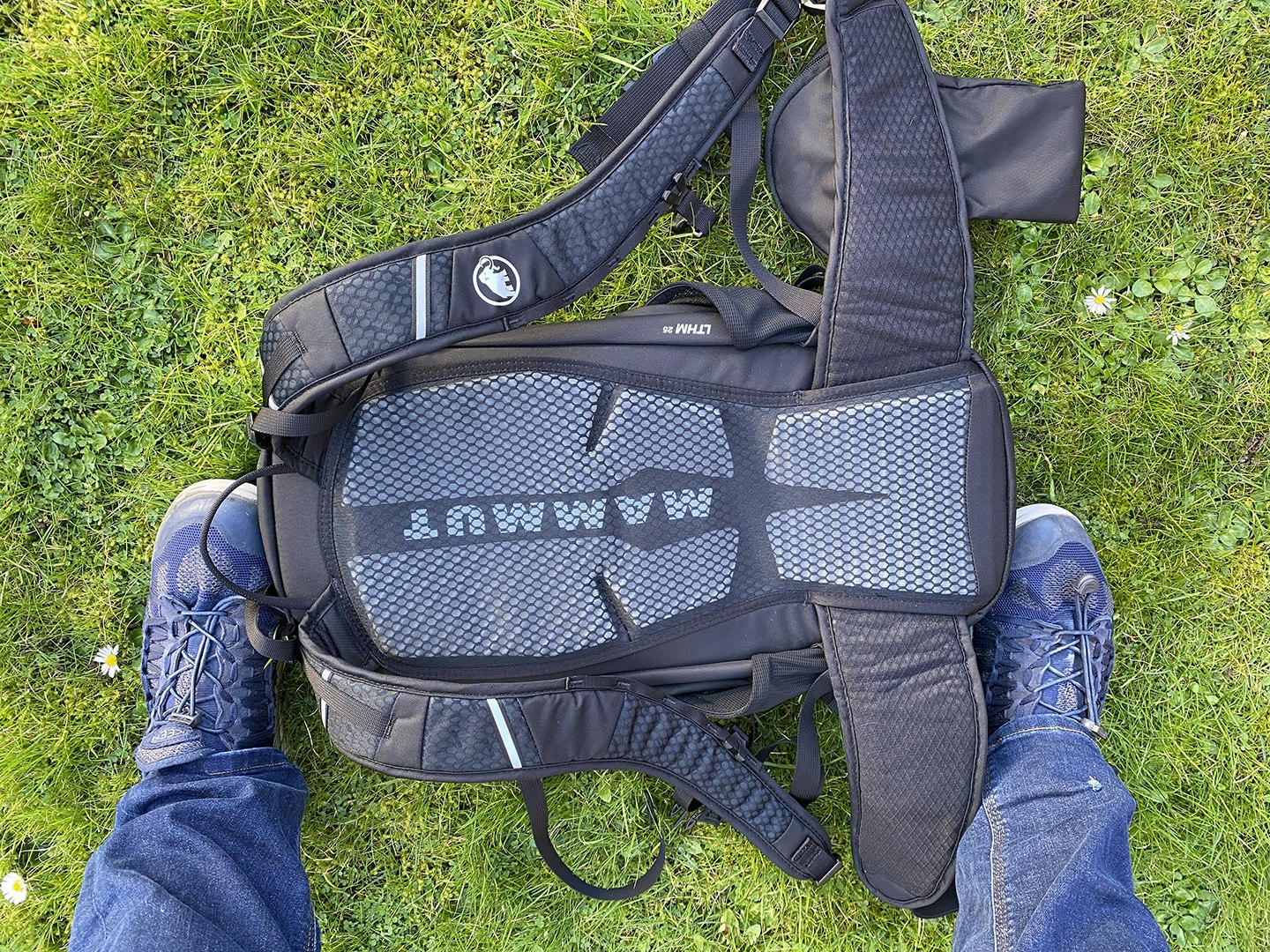
The dimensions of the Lithium 25 are about average for a day-hiking pack: 53cm height x 25cm width x 23cm depth. Empty, it weighs 851g which compares well to others in its class, especially given the number of features on board.
The 25L stated capacity is fair enough: we found it could take the same amount of kit we put in the similar Gregory Miko 25, including:
Water bottle
First aid kit
Hat and gloves
Lunch drybag (with snacks stored in hip pockets)
Valuables drybag
Waterproof jacket or insulator
Fleece jacket
One extra warm layer
Essentials mini-kit: compass, pen, pencil, head-torch, whistle, spare batteries, tick remover, mini insect repellent and mini sunscreen
Small microfleece towel
Walking poles (external)
Features: lid, straps, pockets, and weather protection

This is where the Lithium 25 really excels. Pretty much every bell and whistle you could want on a daypack is here apart from adjustable back length and a slider for the sternum strap. You get walking pole straps, raincover, extra storage areas, hydration system compartment and hose-hole, and a whistle on the chest strap.
The fabric is lightweight but robust (we walked it through gorse and hawthorn thickets with no sign of a tear).
The main section is accessed by a simple rainbow zip and, as with all the zips on the pack, you get a long paracord zip-pull which makes it easy to operate with gloves or cold hands.
Our one gripe is that the clip-straps for the front panel obstruct the track of the main zip, which is a pain if you’re trying to access the main compartment in a hurry.
The pockets and storage compartments are particularly impressive. There are eight in addition to the main compartment, including an ample secondary compartment up top (pictured above) and a huge front flap that will hold a lightweight fleece or waterproof for quick access. There are two stretchy bottle pockets. The flap also boasts a third zipped pocket on its outer face – large enough to take a hat and/or an OS map.
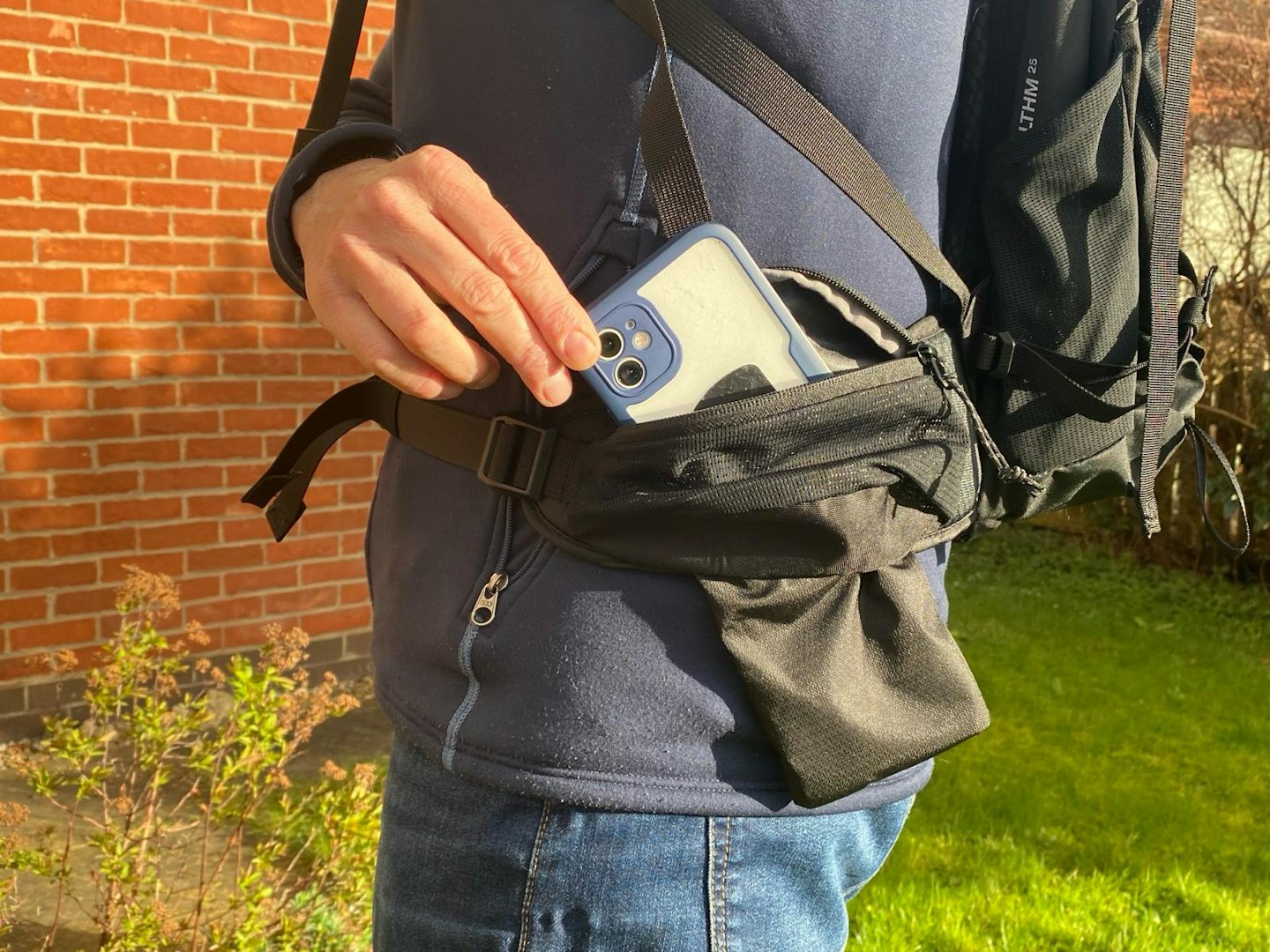
There is also a large zipped compartment on the left arm of the hip-belt. It’s sub-divided into two: a standard pocket that will hold keys, small meds or a Snickers bar/energy gels, and a deep ‘nosebag-style’ pocket that will hold an upright smartphone (see above). That’s a neat idea at first, but the pocket sits so far back, and is so fiddly to get into, that if you’re using your phone regularly (i.e. for navigation) you will probably give up and just use a normal pocket before too long.
(The right arm of the hip-belt has a simple stretch pocket that can’t be secured. We don’t trust it.)
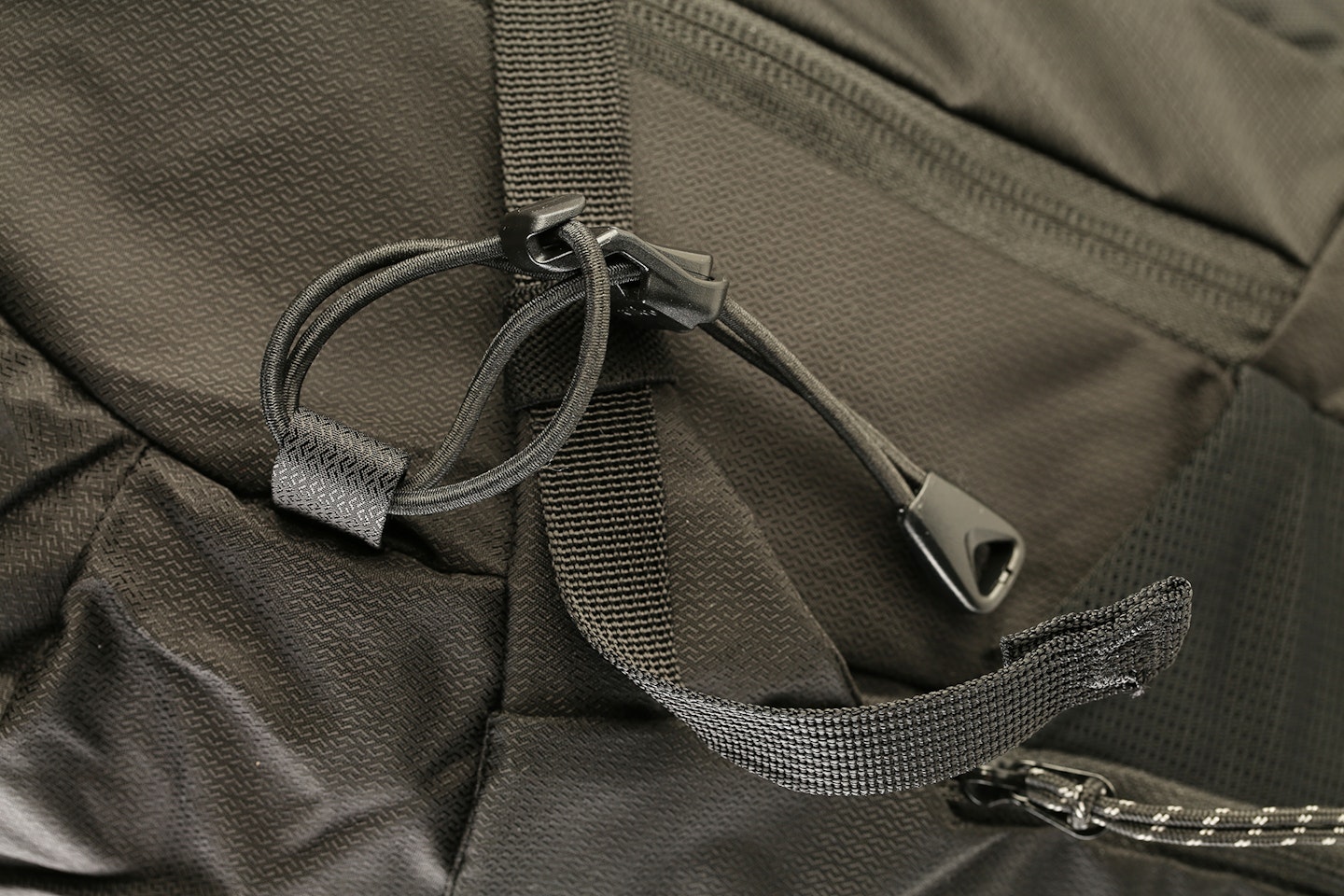
There are bungee cords (above) and basement straps to hold walking poles or ice axes, although we found it just as easy to stow our poles in one of the stretch pockets and secure them with the compression straps. The bungee cords are a bit big and intrusive, adding to the air of fussiness that this pack rather suffers from.
The pack has a DWR (durable water repellent) treatment and comes with a raincover which covers the body of the pack effectively and stays lashed to the pack thanks to a small fabric strap. As ever though, no raincover is perfect. If you know you’ve got a rainy day ahead, best to protect the contents with a rucksack liner or drybags.
Verdict
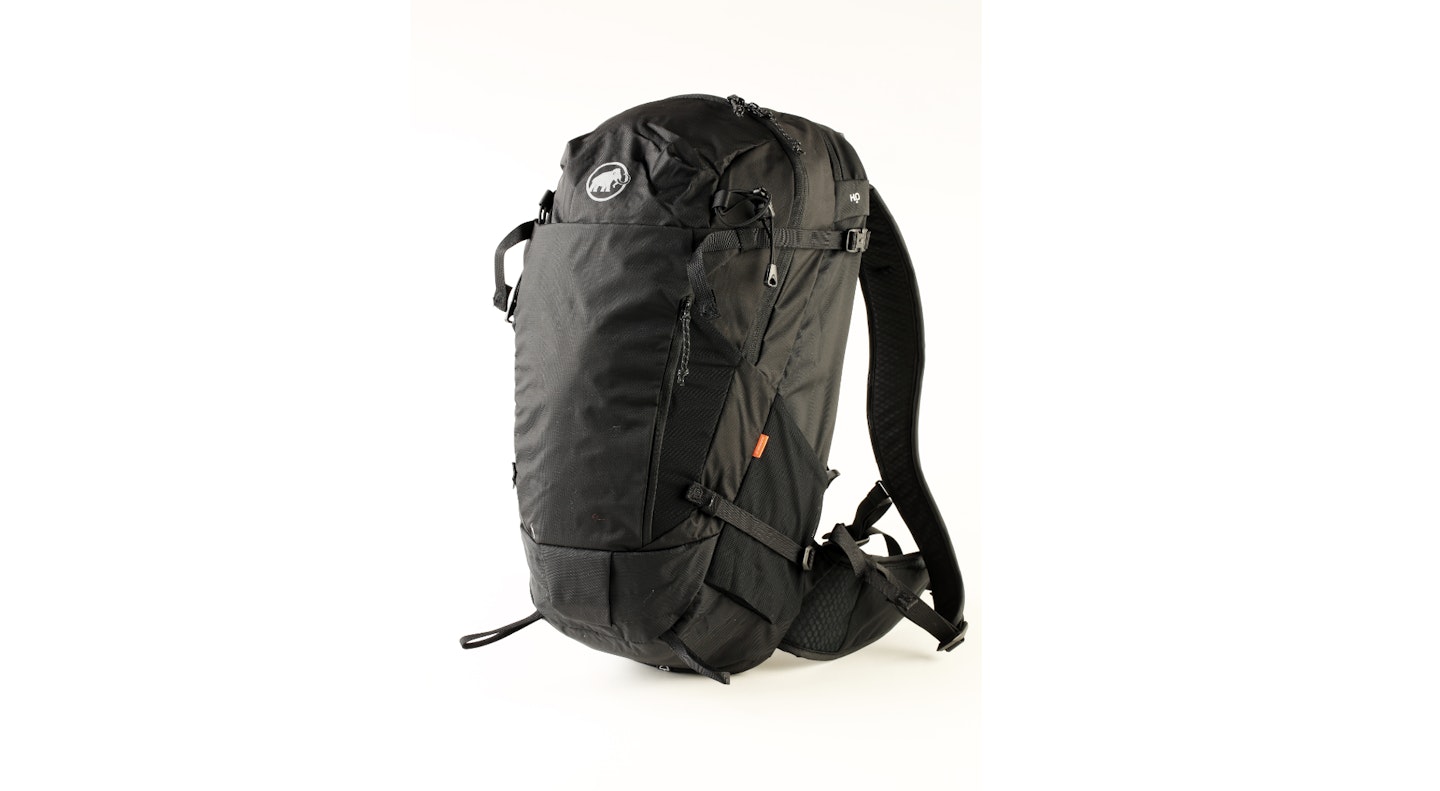
The Mammut Lithium 25 is an extremely impressive rucksack. It’s ideally suited to long day-hikes in hills and mountains, especially if you like a lot of features (including a breathable back system) and plenty of storage options.
It may be too fussy for those who just want a simple, stripped-back carrier, and the morass of zips, clips and cords can be off-putting, especially when they get in each other‘s way.
(If you like the brand but would prefer something more minimalist, consider Mammut’s Ducan or Aenergy ranges.)
Otherwise, the Lithium definitely presents a slightly cheaper alternative to fans of the similarly high-spec Osprey Talon/Tempest and Gregory Miko/Mira daypacks, without skimping on build quality.
How we tested

The Mammut Lithium 25 backpack was tested and reviewed by Nick Hallissey in the Lake District, the North Pennines and the Chiltern Hills. Nick is the Deputy Editor of Country Walking Magazine and has been testing kit for Country Walking, Trail Running and Live For The Outdoors for nearly 20 years, exploring and telling stories from the length and breadth of Britain, and overseas.
